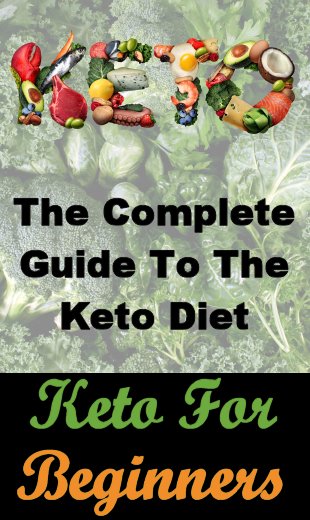100 Cooking Tips
Estimated Reading Time: 9 minutes
As the title suggests, here are 100 assorted tips and “hacks” to make your time in the kitchen easier and safer:
- Don’t have any buttermilk? Add 1 tbsp. vinegar or lemon juice to 1 cup of milk.
- Ready to peel the shells off eggs? Wet your fingers first – the peels won’t stick.
- Guesstimating baking powder amounts is easy when you remember this formula: 1 tsp. baking powder per each cup of flour.
- No baking powder? Substitute ½ cup yogurt, sour cream, or buttermilk for the liquids in the recipe. Then add ½ tsp. baking soda.
- Don’t add too much baking powder: Your cake or quickbread will actually rise less, not more. And it will taste bitter.
- For gluten-free gravy, throw away the flour. Try cornstarch, arrowroot powder, or tapioca starch instead.
- For low-fat baking, use applesauce instead of butter, oil, or margarine. Your baking will be a little heavier, but tasty.
- When trying to remember which to use, keep this in mind: baking powder adds acidity while baking soda is alkaline.
- Save time by pre-prepping ingredients for recipes you often make, and storing them, sealed, in your refrigerator or freezer.
- Before putting your cake in the oven, let your filled baking tin gently drop straight down on the counter. It knocks out any air bubbles.
- To keep brown sugar soft, stick a piece of apple or a slice of bread in the bag. You’ll never have to find rock-hard sugar again.
- If you want to prevent cookies from hardening, store them in a sealed cookie jar with a slice of apple.
- Buy frozen Yorkshire puddings to go with your roast. They heat easily in one pan for only three minutes – and there is no messy clean-up.
- Never make fudge on humid days. The sugar will go “grainy”. Make fudge on cool, clear days – and use a marble board or countertop.
- “Room temperature” ingredients or liquids should feel neither cold nor hot when you test them on the back of your wrist.
- Put a few grains of rice in your salt shaker, if you live in a humid climate. This will stop your salt from clumping.
- Flour your surfaces or flour your dough before rolling – and to make extra-sure it doesn’t stick, place between floured parchment paper.
- Follow recipes exactly the first time you make them. After that, you’ll have a much better idea on how to successfully adjust ingredients.
- Don’t store meats in your refrigerator without first putting them on a dish, to catch blood that might escape and contaminate your fridge.
- Remember that the outside of frozen turkeys will thaw much faster than the inside, so thaw yours in the fridge for safety.
- If thawing a turkey in cold water, it is vital for food safety that you change the water every half hour.
- Make sure you put all leftovers back in the fridge within two hours of serving. After that, food can begin to spoil.
- When making holiday meals, first clear your counters. Remove unnecessary items to give yourself maximum work space.
- When buying your holiday squash, save time by choosing pre-cut, pre-peeled, packaged fresh squash.
- Beef keeps longer in the freezer than fish or chicken. You can store beef for up to six months; fish and chicken, no more than three.
- Buying fresh, local fruit and freezing it in a chest freezer ensures that you and your family can enjoy it all year round.
- If you plan to freeze a lot of fresh fruit and vegetables, invest in a vacuum sealer.
- Don’t try to freeze vegetables that are normally eaten raw (e.g. celery, lettuce). They will not freeze successfully.
- Blanch vegetables before freezing to stop sugars turning to starch – which does happen quickly after picking.
- To blanch vegetables, drop them into boiling water for a minute or two, then drain and plunge them into ice water.
- You can store asparagus for up to two weeks in your refrigerator, if you stand it in a jar of cold water with tips up.
- Make 3 – 4 days’ worth of carrot sticks in advance and store them in your refrigerator in a glass container of cold water, for maximum freshness.
- Make up salads in a jar for lunch – heavy items like carrot slices at the bottom, grains, fruit and nuts in the middle, and greens at the top.
- Assemble all your blanching and freezing equipment ahead of time. Speed is everything when it comes to successful blanching.
- Blanch peppers only if you plan to serve them cooked at a future date. For crisper peppers, freeze raw.
- Fruit does not need to be blanched before freezing – but you can freeze it in a light syrup, if desired.
- Did you know that frozen bananas make wonderful, creamy “ice cream”, when puréed in a food processor?
- If you’re going to freeze bananas, always choose ones that are fully ripe. Even at the edge of over-ripe is preferable to under-ripe.
- You can freeze bananas in or out of the peel – but they will last longer out of the peel and look nicer when served “as is”.
- Be aware that if you freeze bananas in the peel, the peel will turn black. This is normal, and the bananas inside are perfectly good.
- For under-ripe bananas, bake them on a cookie tray for 40 minutes at 300ºF (149ºC). The skins will turn black, but when cool, they’ll be ripe.
- To freeze bananas for banana bread, purée first, and add 1 tsp. lemon juice per cup of purée. Mix well. Store in plastic tubs.
- If you want frozen banana pieces or slices, remove the peel and cut into chunks or slices first. They are impossible to cut when frozen.
- If you want to stop clumping from occurring, first freeze fruit or vegetables pieces on a tray. Then quickly bag the frozen pieces.
- Be sure to pat your fruit or veggie pieces thoroughly dry with a paper towel, before freezing.
- For optimal freezing of fruits, meat and vegetables, freeze in a deep freezer at zero degrees. Buy a freezer thermometer.
- When freezing anything, be sure to mark the date frozen on the bag or label and mark the expiry date too, if you wish.
- All baking ingredients – including eggs – should be at room temperature for at least an hour before baking.
- If a recipe calls for separating your eggs, do so while they are still refrigerator-cold. It will be much easier.
- Whipping up a meringue? Make sure your egg whites are at room temperature.
- Worried that your eggs have been in the fridge too long? Put one in a bowl of water. If it sinks, it’s still fresh.
- When trying to soften butter more quickly, don’t cut in a chunk – use a cheese grater to make fine pieces.
- If a recipe tells you to alternate dry and wet ingredients, start and end with dry ingredients.
- Keep all your cake decorating utensils and ingredients in one small plastic tub with a lid. You’ll never lose a cake icing tip, that way.
- Are you somebody who always uses a cookbook? Buy a cookbook holder from a kitchen store or online – it will make your life easier.
- Running your mixers at half-speed or lower will greatly extend their lifespans.
- Try turning a metal magazine holder on its side and sliding into your kitchen drawer to stop items from jamming up your drawer.
- Declutter your kitchen at least once every six months. Donate pots and pans you don’t use. Throw out ingredients you’ve never touched.
- Invest in a jar opener. It is an inexpensive utensil – and you’ll be surprised at how often you find yourself using it.
- If you can’t open a jar and have no jar opener, try slipping on a rubber kitchen glove first.
- Use plain dental floss to cut cheeses and other soft foods. Use a sawing motion, or circle the item with the floss – and pull.
- Use pots with two handles if you have health issues like arthritis. This will make your grip more stable – and help you avoid accidents.
- Can’t reach items on your top kitchen shelves? If stepping stools feel unstable, buy a long-arm grabber from a Home Health store.
- To avoid nasty accidents, never store heavy items, glass, or other breakables on your top kitchen shelves.
- Place items or utensils you use all the time at waist height or in your first row of overhead shelves.
- Do a “safety check” on your kitchen periodically. And look for ways to improve functionality as you improve safety.
- Have a “kitchen maintenance” day, once in a while. Deep-scrub stains from cutlery and pots and pans. Throw out worn items. Declutter.
- Clean your kitchen thoroughly before you cook, and clean as you go during cooking. You’ll have minimal clean up after.
- Be sure to have fine steel-wool on hand. You can use it to clean deep stains or burns from stainless steel pots in an instant.
- Never, ever soak silver-plated cutlery or dishes in water with bleach. Your silver-wear will blacken instantly – and permanently.
- An envelope cut diagonally, with the remaining point also cut off, makes a handy impromptu funnel for dry ingredients.
- Use a griddle iron or heavy fry pan for pancakes. If you use cast iron, never wash it – wipe and season it with oil after every use.
- Make French Toast in your crockpot. Lace layers with non-acidic fruit like currants, apple slices or raisins.
- Place cookie cutters on your griddle. Pour in pancake batter or eggs to jazz up those brunches.
- Mix spices for recipes ahead of time in a small shot glass. Add after you’ve added sauce ingredients for the best flavour.
- Mix up your own pumpkin pie spice – two parts cinnamon to one part ground nutmeg, one part ground allspice, and one part ground ginger.
- Add a pinch of freshly minced ginger to your pumpkin pie mix for a zestier taste.
- Making salad ahead of time in a jar allows you to refrigerator-store it for up to seven days.
- Print cooking infographics or charts from Pinterest or cooking sites. Tape up inside your cupboard doors, for easy reference.
- To make perfect white or green tea, let your kettle rest for a few moments after reaching a boil. Never use boiling water on these teas.
- Stock your kitchen with staples so you can quickly whip up anything – flour, bouillon cubes, spices, sugar, salt, and olive oil to start with.
- After making a recipe with bouillon or broth in a carton, pour the remaining broth into ice cube trays and freeze for later.
- Gravy turning gray? Check out your pan – it’s probably aluminum. Use stainless steel or copper instead.
- Replace half of the oil in your marinade with wine for a more acidic effect.
- If you plan to go vegetarian, buy a big spice rack and stock it with fresh herbs and spices to add excitement to your cooking.
- Substitute coconut milk for condensed milk if you’re making a vegan-friendly cake.
- ¼ cup applesauce, puréed tofu. or one mashed banana will replace one whole egg in vegan recipes. Use tofu in savoury recipes.
- Bake for longer at a lower temperature for most vegan recipes. You’ll have much less stodgy results.
- Add hemp hearts to muffins instead of bran: No, you won’t get high and it will make a delicious, nutritious change.
- Need to improvise kid-friendly pizza? Use frozen dinner roll dough. Spread with tomato sauce and sprinkle with cheese. Bake.
- Roll peeled banana chunks in toasted coconut, cocoa powder or chocolate sprinkles to increase kid-appeal.
- For almost-instant applesauce, microwave apple pieces for 3 – 4 minutes to soften. Add cinnamon. Purée in a food processor.
- When pre-preparing sandwiches, don’t cut the crusts off till right before serving. The sandwich edges will dry out and curl if you do.
- Use beer or sparkling wine to make a tasty, unique mock loaf of “bread” – without yeast.
- To make bread “crack” on top in a rustic manner, place a pan of water on the bottom rack of your oven, when baking.
- Slightly toast sunflower seeds or nuts before sprinkling them on top of bread. They will be much more digestible.
- Soak grains such as oatmeal for at least ten minutes with a splash of boiling water, before adding them to bread.
- To make “tulip”-shaped cupcake liners, fashion out of squares of parchment paper in your muffin tin.
- Place a paper lace doily over your cake and sift icing sugar all over it. Carefully remove doily – the pattern remains.
- To make any colour, shade or tint of frosting, check out the chart on the Food Network website. (If that link no longer works, try this archive version instead.)
Conclusion
I hope you found these tips useful, and I’d love to hear about any of your own.
If you enjoyed this article, why not give a tip, which will go to Mark Stuart, the site creator, (through a third-party platform of their choice), letting them know you appreciate it. Give A Tip







